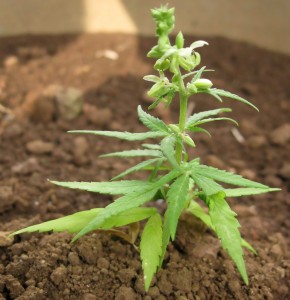15
Jul
Colorado Warned of Its Illegal Allowance of Pesticides in Marijuana Production
(Beyond Pesticides, July 15, 2015) Yesterday, Beyond Pesticides sent a letter to the Colorado Department of Agriculture (CDA) urging officials to reconsider their latest position on pesticide use in cannabis cultivation and warning them of potential violations of the Federal Insecticide Fungicide and Rodenticide Act (FIFRA) that would likely arise moving forward. This letter was written in response to recent actions by CDA that encourage stakeholders to pursue exemptions for highly toxic pesticides and other indications that the state intends to allow the use of other pesticides under general label language that does not specifically address use on marijuana. Both of these approaches violate federal law and Environmental Protection Agency (EPA) regulations. Given the potential legal challenges associated with approving toxic pesticides for use on cannabis, Beyond Pesticides encourages CDA to allow within the state only the use of pesticides of a character unnecessary for regulation, which fall under section 25(b) of FIFRA.
 For several months, government entities in the state have been at odds with marijuana growers over whether or not pesticides can be used to cultivate their crops. In early June, CDA published a list of pesticides it believed, through general labeling language, may be used on cannabis, despite the fact none of the pesticides have been registered for use on marijuana by the EPA, as required by FIFRA. That list was accompanied by a letter to stakeholders guiding them in the process of attaining a Special Local Need (SLN) exemption under FIFRA, which would allow them to use these toxic chemicals in cannabis cultivation.
For several months, government entities in the state have been at odds with marijuana growers over whether or not pesticides can be used to cultivate their crops. In early June, CDA published a list of pesticides it believed, through general labeling language, may be used on cannabis, despite the fact none of the pesticides have been registered for use on marijuana by the EPA, as required by FIFRA. That list was accompanied by a letter to stakeholders guiding them in the process of attaining a Special Local Need (SLN) exemption under FIFRA, which would allow them to use these toxic chemicals in cannabis cultivation.
Because marijuana is federally classified as a Schedule I drug under the Controlled Substances Act, as opposed to a food or a crop, EPA is barred from reviewing any application, whether for a SLN exemption or to set tolerance levels for pesticides that would be used on the plants. Absent this proper EPA review and oversight of toxic pesticide use on cannabis, CDA may allow only the use of those pesticides found in section 25(b) of FIFRA, which has been found by the EPA to be of a character unnecessary for regulation. As outlined in the letter sent to CDA officials, adhering exclusively to pesticides approved under 25(b) is the best way to avoid any legal ramifications for unregistered pesticide use, and to keep workers and consumers safe from the unstudied side effects that may accompany the use of toxic pesticides on marijuana crops within the state.
“The use of pesticides in the cultivation of cannabis has health implications for those growing the crop, and for users who are exposed to toxic residues through inhalation, ingestion, and absorption through the skin,” said Jay Feldman, executive director of Beyond Pesticides. “The good news is that five states and DC have adopted rules that require marijuana to be grown with practices that prevent the use of pesticides. State officials have an opportunity to restrict all pesticide use at the front end of a growing market, require the adoption of an organic system plan, and set a course to protect health and the environment,” Mr. Feldman continued.
More information about state (including Colorado) regulation of pesticide use in marijuana cultivation can be found in Beyond Pesticides’ investigative report on the issue, which was published this past spring. The report highlights different approaches used by states and raises safety concerns due to loopholes in federal law. The report also recommends that states with legalization adopt laws governing cannabis production that prohibit federally registered pesticides and require the adoption of organic practices that only allow products exempt from registration based on the full range of possible exposure patterns, which is the same position expressed to CDA in Beyond Pesticides’ letter.
All unattributed positions and opinions in this piece are those of Beyond Pesticides.










